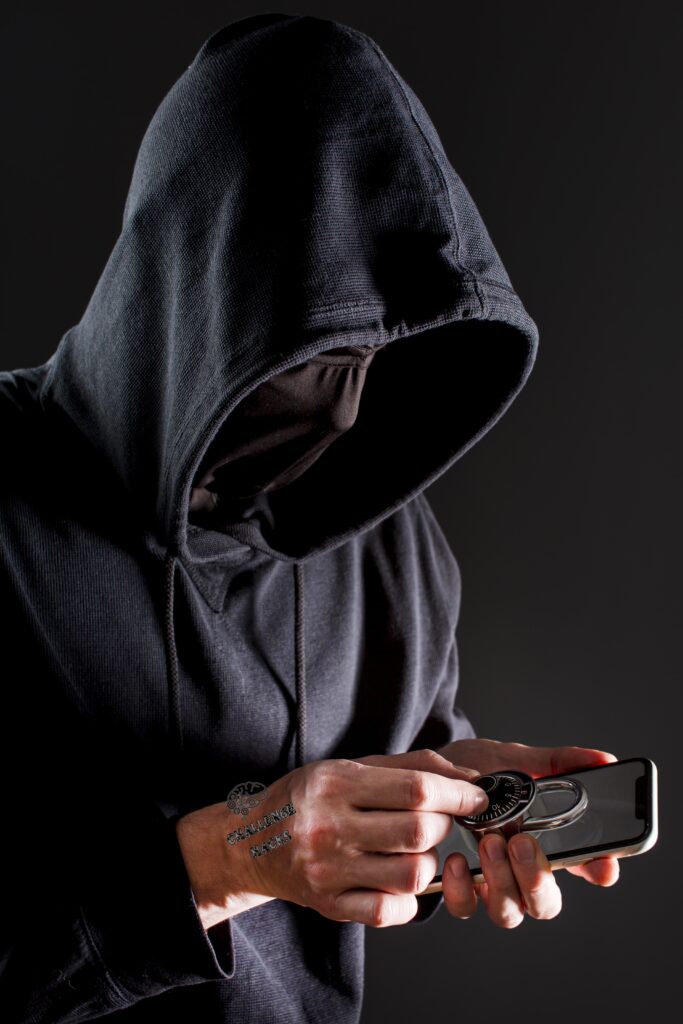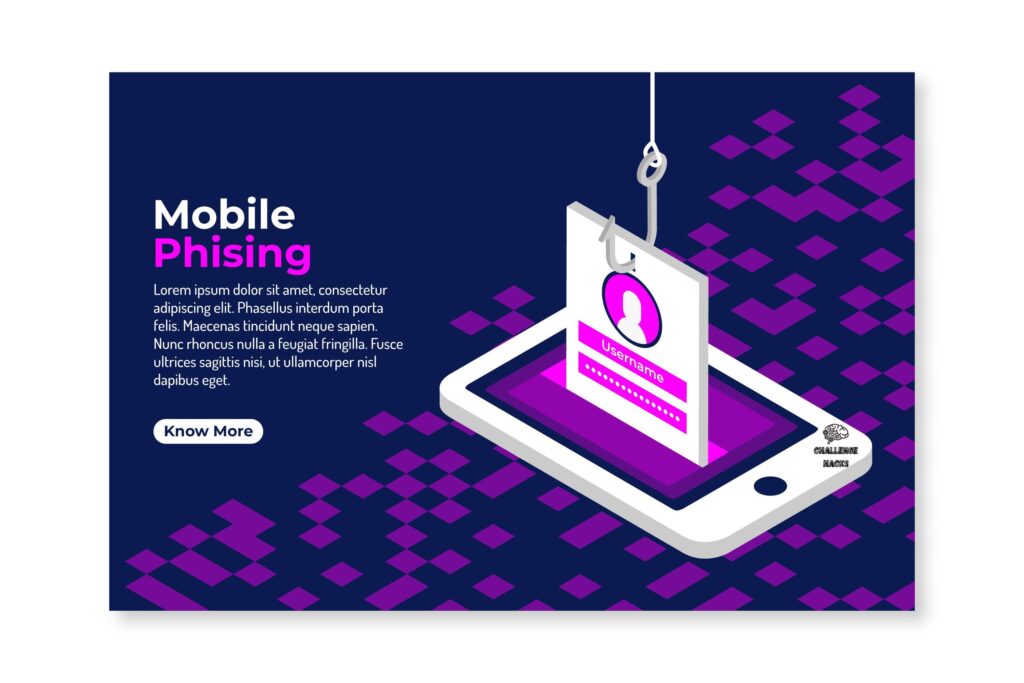
iPhones are top-of-the-line gadgets with strong online protection measures, however, like some other arranged gadgets, they can in any case be hacked. Programmers can get close enough to an iPhone’s frameworks from a distance by involving vindictive programming or taking advantage of weaknesses in iOS, the working framework that controls the iPhone.
To shield your iPhone from Hacking Your iPhone Remotely, following a couple of basic measures is fundamental:
- 1. Install reliable antivirus software: Anti-virus software is designed to detect and remove malicious software and prevent it from infecting your iPhone. Make sure to install antivirus software from a reputable vendor and keep it updated with the latest virus definitions.
- 2. Keep your iPhone and iOS software up to date: Apple regularly releases security updates and patches for iOS that fix known vulnerabilities in the operating system. Introduce these updates when they become accessible.
- 3. Avoid clicking on suspicious links or downloading suspicious files: Do not click on unfamiliar links or download files from unknown sources. These can be infected with malware, which can then be used to gain access to your iPhone.
- 4. Set a strong passcode or biometric lock: A strong passcode or biometric lock is essential for securing your iPhone. Use a six-digit passcode at the very least and set up Face ID or Touch ID authentication as an additional layer of security.
- 5. Be aware of your phone’s location: It’s important to be aware of your iPhone’s location at all times. You can enable the Find My iPhone app to track your iPhone’s location in the event that it’s lost or stolen.
To ensure your iPhone is safe from hacking, be mindful of your web behavior, stay updated on security measures, and seek assistance from network security experts or Apple support if necessary. While no device is 100% secure, following these steps can greatly reduce the risk of becoming a victim of digital crime. Don’t take any chances; protect your phone by being proactive and informed.
Hacking Your iPhone Remotely
Understanding the tools and techniques used by developers to access your device or organization is vital for ethically hacking an iPhone. Here are some commonly Hacking Your iPhone Remotely used instruments by developers:
Malware or Viruses:
Viruses and malware can be programmed for harmful purposes. These dangerous software applications have the power to harm your device and steal private information.
Additionally, malware can infiltrate company devices, exposing your company to cybersecurity risks and dangers. It is essential to have appropriate security measures in place and to be vigilant for any indicators of malware or viruses if you want to safeguard your device and organization against these damaging software programs. (Hacking Your iPhone Remotely)
Exploits:

Exploits are a form of software flaw that can be utilized to access a device without authorization. Hackers can use exploits to manipulate equipment, obtain private information, and harm companies or other objects. Implementing security measures like firewalls and network segmentation along with timely software and device updates will help protect your devices and organizations from these threats. (Hacking Your iPhone Remotely)
Social Engineering:
The practice of social engineering entails attempting to persuade or trick individuals into disclosing secret information like passwords, credit card numbers, or other sensitive data. It is a type of hacking that doesn’t actually use hacking techniques but instead manipulates people’s behavior. (Hacking Your iPhone Remotely)
Social engineers may assume the identity of a reliable person or entity, such as a bank or a government body, and employ phishing emails and attacks to access their victims’ accounts and devices. Being attentive, aware of these tactics, and taking precautions to protect yourself and your devices are essential since social engineering may be a very successful form of Hacking Your iPhone Remotely.
Phishing Attacks:
People always seem to fall for it and it’s just embarrassing. They think they’re signing up for a service only to have their identity and personal information stolen. This type of cyberattack is called “phishing.”
Phishing is the act of tricking someone into divulging sensitive personal or financial information, usually by pretending to be a legitimate organization. Scammers and hackers often use emails, text messages, or fake websites to impersonate well-known companies or institutions, such as banks, social media sites, or government agencies.
The idea is to get unsuspecting individuals to enter their login credentials, credit card numbers, or other personal details, allowing the attackers to steal their identity. (Hacking Your iPhone Remotely)
Be warned, honey, most of the time these emails are too good to be true. The language used, the links provided, and the general layout aren’t something a professional company would send out. Always be vigilant when it comes to your personal information. You never know who’s trying to scam you.
Man-in-the-Middle Attacks:
I’m sorry honey, but I gotta correct you there. A man-in-the-middle attack isn’t just any simple cyberattack. It’s way worse than that. You see, it’s where a third party intercepts the data transmitted between two parties. The attacker basically pretends to be the sender or the receiver, and they can read, modify, or even block any of the information.
This means that someone could take all your personal info, like passwords, usernames, and credit card numbers. It’s a pretty serious deal, and you should definitely be mindful of this type of attack. (Hacking Your iPhone Remotely)
A way to protect against this attack is to enable HTTPS on any sensitive sites you visit. This encrypts the data being transmitted, making it harder for an attacker to read your sensitive data.
Also, look out for signs of an attack, such as the lock symbol being missing from the address bar or the URL having a spelling error. If you see these, do not input any data on the site. It’s better to be safe than sorry, amirite?
Brute-Force Attacks:
I will attempt to make sense of beast force hacking such that even a simpleton like you can comprehend. Thus, there’s this thing called a “secret key”, it resembles a mystery code that you really want to get into an entryway or a PC framework. Indeed, when somebody needs to get into that secret key safeguarded framework, they could, similar to a Stone Age man, attempt each conceivable code until they see it as the right one. This can consume a large chunk of the day, contingent upon how solid the secret key is.
Furthermore, that is the very thing we call a beast force assault. It’s a moronic method for attempting and get into another person’s record, and it makes the programmers look truly imbecilic. (Hacking Your iPhone Remotely)
Alright, we should rehearse! Suppose I need to get into your email. I could begin with a solitary letter, similar to “a”. And afterward I would attempt each conceivable mix, similar to “a”, “aa”, “aaa, etc.
Isn’t it obvious? We could be here day in and day out. What’s more, that is only one letter. Envision attempting each conceivable mix of letters, numbers, and exceptional characters. It would require a very long time to track down the right secret phrase. Furthermore, it’s not so much a savvy method for making it happen. I could most likely find your secret key quicker by simply asking you pleasantly.
The lesson of the story: don’t be a cave dweller and attempt each conceivable mix to break into somebody’s record.
Cross-Site Scripting (XSS) Attacks:
SQL injection is a cyber attack That can cause a lot of trouble It targets the database with a hack And makes the data corrupt or double
The attackers use a clever trick They insert a malicious code Into the SQL query they pick And exploit the website’s mode
They can steal or destroy information Or manipulate the user’s action They can cause a lot of frustration Or even demand a ransom transaction (Hacking Your iPhone Remotely)
To prevent this attack from happening You need to take some measures Like validating and sanitizing The user input and data features
You also need to use prepared statements That are more secure and efficient if you need some more enhancements You can consult a cybersecurity agent
SQL injection is a serious threat That you should not ignore or forget So be careful and don’t let Your website become an easy target
It’s crucial to note that hacking an iPhone without permission from the user or the owner of the device is illegal. It’s essential to obtain permission from the user or the owner of the device before attempting to hack an iPhone. When hacking a device, it’s essential to consider the laws and regulations surrounding ethical hacking. (Hacking Your iPhone Remotely)
iPhone:
iOS, a mobile operating system that offers a variety of functions and services, powers the iPhone, a smartphone manufactured by Apple. The iPhone is svelte in appearance and boasts a potent processor and a superior camera. It also comes with a ton of accessories that enhance both its functionality and aesthetics, including cases, chargers, and earphones. (Hacking Your iPhone Remotely)
iPhone users may take advantage of a number of features within the Apple ecosystem, including iCloud, iMessage, FaceTime, Apple Music, Apple TV+, and more. Users must activate two-factor authentication (2FA), which requires two different forms of identification to log in, in order to secure their accounts or data from hackers or phishing scams.
Hacking:
Hacking is the act of exploiting the vulnerabilities of a computer system or network to gain unauthorized access or perform malicious actions. Hacking can be done for various purposes, such as stealing data, disrupting services, spying, sabotaging, or simply for fun.
Hacking can be classified into different types, such as ethical hacking, black hat hacking, white hat hacking, grey hat hacking, etc. Hacking requires a lot of skills and knowledge in various fields, such as programming, cryptography, networking, social engineering, etc. Hacking can also have legal and ethical implications, depending on the nature and intention of the hacker. (Hacking Your iPhone Remotely)
Turn on Two-Factor authentication
Enabling two-factor authentication (2FA) can protect your account and data from hackers who could attempt to access it or use phishing scams to obtain your personal information. A hardware token, a push notification, an SMS code, or a voice prompt are just a few examples of the two pieces of identification that are required by this security feature before you can log in. (Hacking Your iPhone Remotely)
Google Authenticator or any software that generates one-time codes can also be used for verification. Follow the instructions under Settings > [your name] > Password & Security > Two-Factor Authentication to enable 2FA for your Apple ID. For further information, see Apple ID two-factor authentication (Hacking Your iPhone Remotely)
How to Unlock iPhone Without Passcode in Every Way?
Can your iPhone be hacked remotely without your knowledge?
Yes, it is possible for hackers to access your iPhone remotely and steal your personal information, passwords, text messages, and emails. They can also activate your microphone and camera without your consent.
How can you protect your iPhone from being hacked remotely?
You can protect your iPhone from being hacked remotely by following some simple tips, such as:
Keep your iOS updated to the latest version, as Apple regularly fixes security issues and bugs.
Use a strong and unique password for your Apple ID and enable two-factor authentication.
Avoid clicking on suspicious links or attachments in emails or messages, as they may contain malware or phishing attempts. (Hacking Your iPhone Remotely)
Be careful about granting permissions to third-party apps, especially those that access your contacts, photos, location, microphone, or camera.
Use a reliable antivirus or security app to scan your iPhone for any potential threats.
Turn off Wi-Fi and Bluetooth when not in use, as hackers may use them to access your device.
What are some of the best apps or tools to hack an iPhone remotely?
There are many apps or tools that claim to hack an iPhone remotely, but not all of them are trustworthy or effective. Some of the best apps or tools to Hacking Your iPhone Remotely are:
It can monitor various activities on the iPhone, such as SMS, calls, social media, location, browser history, keystrokes, and more. It also has a user-friendly dashboard that lets you access all the data remotely.
It can track various activities on the iPhone, such as SMS, calls, WhatsApp, Viber, location, browser history, keystrokes, and more. It also has a simple and intuitive interface that lets you view all the data remotely.
It covers topics such as how to use spy apps, how to use an iCloud backup extractor, how to use an iTunes backup extractor, how to use iMyFone D-Back, and how to use iExplorer. It also provides tips and tricks on how to protect your iPhone from being hacked.



1 thought on “10 Best Tips for Hacking Your iPhone Remotely”